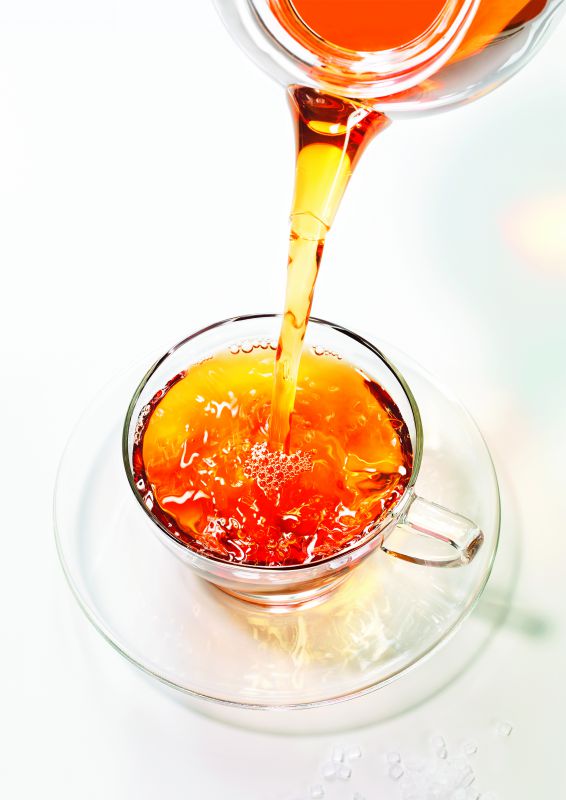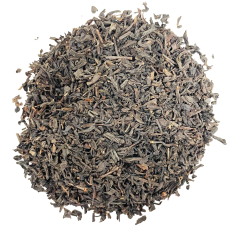Black Tea
Flavoured Black Tea
Black Tea
Flavoured Black Tea
Black Tea
Black Tea
The Unique Qualities of Chinese Black Tea
The quality of Chinese black tea is very high – the sweet, soft nature of leaf, plucked from the sinensis and cultivars provides an underlying delicious, non-astringent flavour that is enhanced by the distinct Chinese style of withering and oxidation. It is typically mild, with a deep, earthy flavour. And, because its leaves are so carefully handcrafted, Chinese black tea is celebrated for its looks, as well as its taste.
Harvesting and Production
The Chinese first started manufacturing tea in the 17th Century, when producers realised that drying, fermenting and firing the tea leaf preserved it in better condition for export. China produces only a small quantity of black tea – less than 15 percent of their yearly production. But there are many exquisite black teas to be found from Anhui, Fujian, Guang-dong, Henan, Sichuan and Yunnan Provinces.

Chinese black tea is produced from the Camellia sinensis tea plants. After the production process, the black tea is stronger in flavour than green and white teas. This is because black tea is far more oxidized than other teas. The production process follows a similar 4 step process to other teas:
- Withering: Leaves are laid and withered. This is done by having warm hair blown over them to remove moisture.
- Rolling: When ready, the tea leaves are then rolled and twisted – usually with a machine but sometimes by hand. This act releases enzymes within the leaf that react with the oxygen in the air.
- Fermentation: Considered the most important step, the leaves are laid out and the temperature triggers fermentation within the leaf. After oxidizing for around 6 hours, the veins within the leaf turn a red/brown. It is important to monitor the temperature and humidity in this step as one mistake could affect the flavour of the tea.
- Drying: The leaves are dried under very hot temperature of up to 80°C to preserve them. After the leaves have cooled, they can be packed for transport.
History of Chinese Black Tea
Up until around the 17th Century, Oolong and green teas were the only teas available to drink in China.
The discovery of black tea was a happy accident if you are to believe a well-known tale that tells the story. The story says that an army took shelter in a tea factory, holding up the production process and forcing the leaves to be left out in the sun. Oxidising over a longer period, the leaves turned dark. This accidently caused the creation of the first black tea which led the way for black tea development!
In the west, Chinese black tea is the name given to fermented tea with a distinct red colouring. However, these teas are known as red tea in china and only the most aged teas are considered true Chinese black tea.
Throughout history there has been a lot of confusion in regard to the name of black tea. Even today Chinese red tea is referred to as black tea in the west.
The most famous family of true Chinese black tea is the Pu-Erh. Allowed to age over time, the fermentation process continues, giving the tea a distinct and strong flavor.
How to Brew Chinese Black Teas
Whether you want to use the loose leaves or try a tea bag infusion, the standard process is the same.

Brewing Chinese Black Tea::
- Boil some freshly poured water
- Place the tea leaves in a tea strainer
- Pour the hot water over the leaves
- Steep the tea for the appropriate amount of time
- Strain the tea
- Add a dash of milk to taste, sweeten if required
- Sit back and enjoy!
Brewing Table
 1 Levelled teaspoon
1 Levelled teaspoon
 2-4 minutes
2-4 minutes
 A range of colours including: Red Brown, Golden Brown, Amber
A range of colours including: Red Brown, Golden Brown, Amber
NOTE: Please make sure to read the individual brewing instructions on each package of tea.
Mild with a deep, earthy flavour, Chinese black teas are so carefully handcrafted and are celebrated for their looks as well as their taste.
Our Chinese Balck Tea favourites are:

Pu-Erh Organic Tarry Lapsang Souchong China Keemun
- Ronnefeldt Pu-Erh Organic - Earthy black specially fermented Yunnan tea.
- Ronnefeldt Tarry Lapsang Souchong - A heavenly smoked flavour with a beautiful deep round taste.
- Ronnefeldt China Keemun - An elegant low caffeinated black tea with a rounded flavour.





 EARN POINTS WITH OUR LOYALTY SCHEME
EARN POINTS WITH OUR LOYALTY SCHEME





















